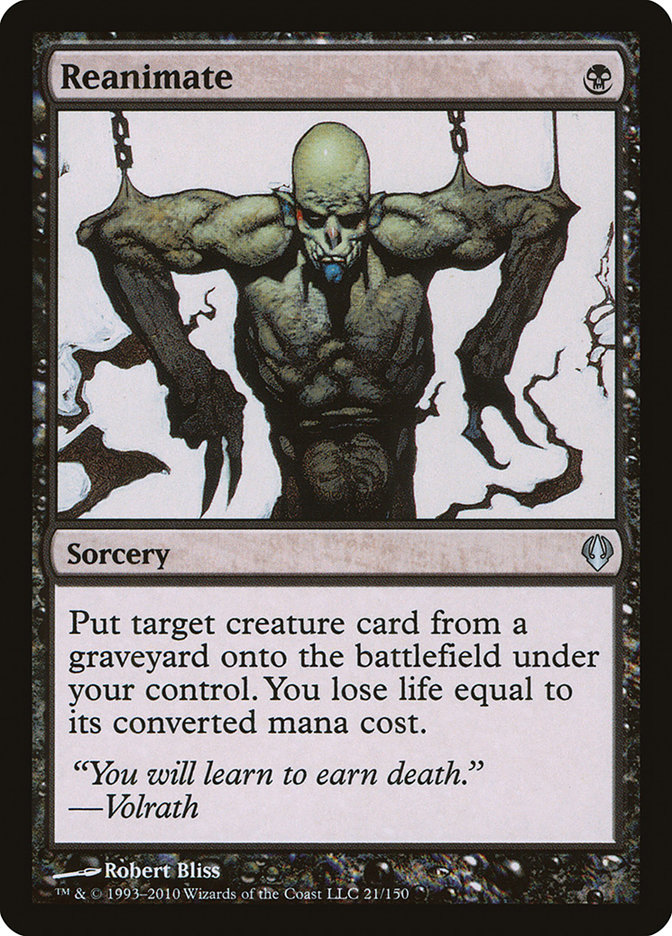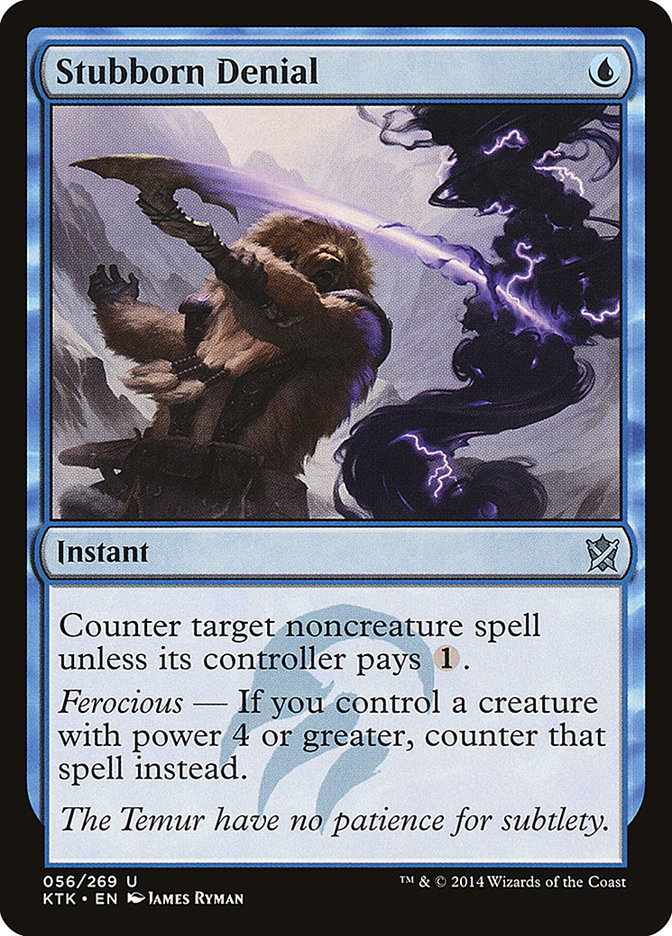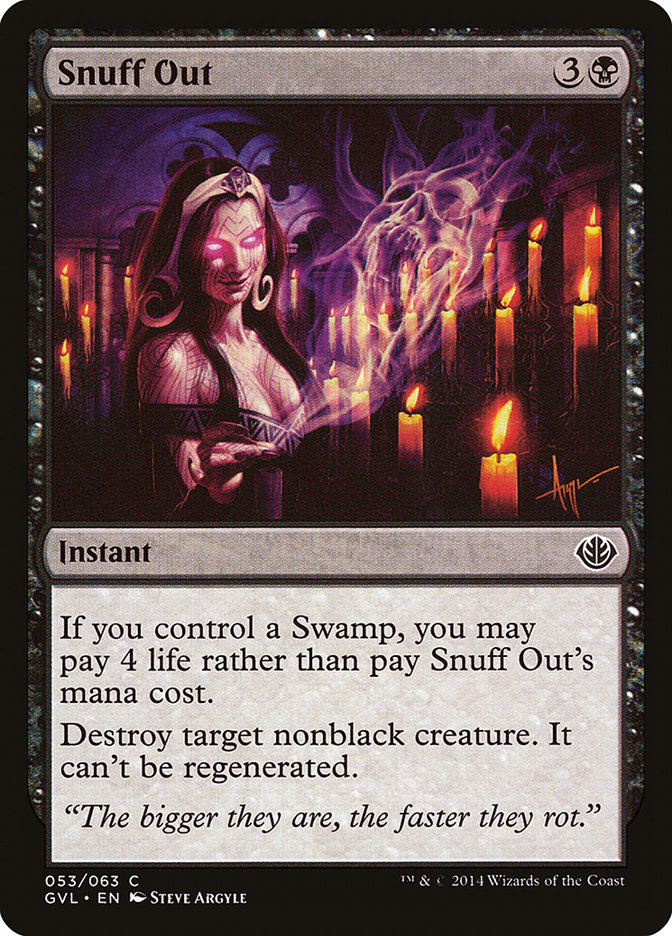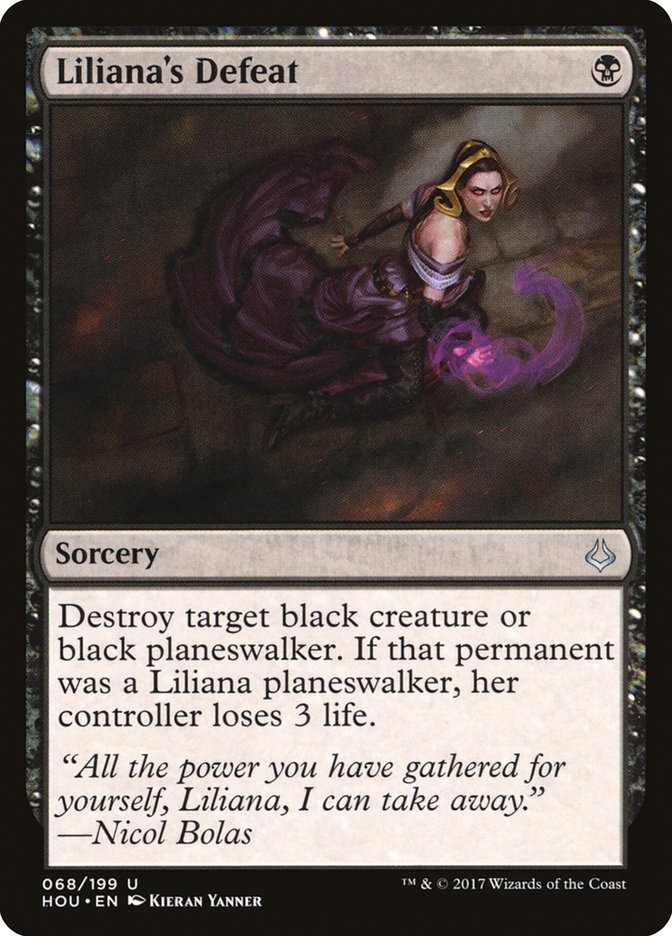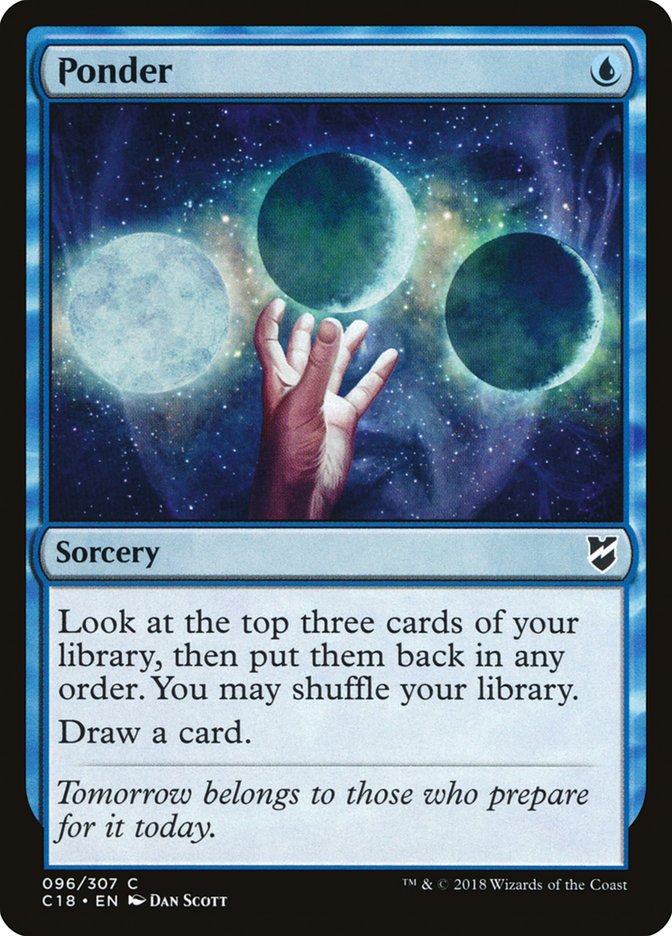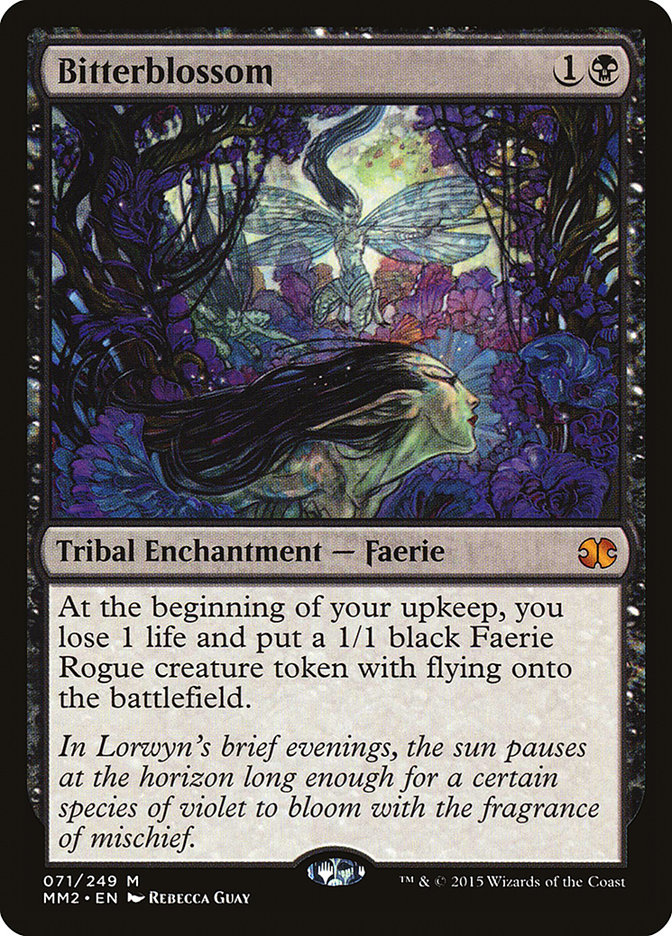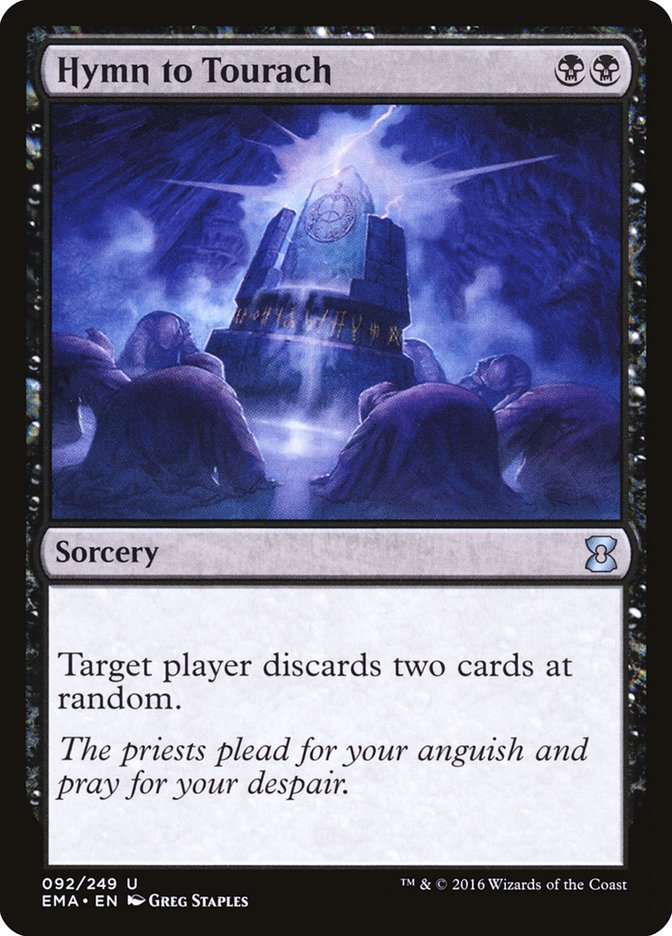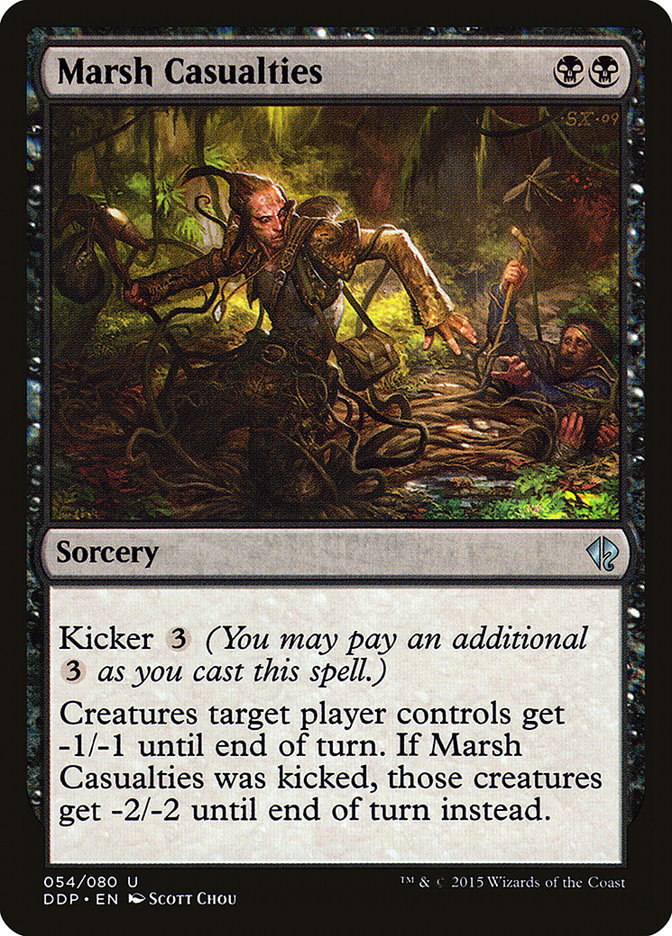We’re getting deep into Guilds of Ravnica preview season, but
around this time many forget that there are still tournaments happening
nearly every weekend. And this weekend, the tournament that is going to
have everyone talking is full of grandeur, great players, and will feature
one of the greatest formats of all time.
Oh, you thought I was talking about the World Championship of Magic: the
Gathering?

In all seriousness, SCG Baltimore is going to be a very fun tournament,
featuring Legacy! The format has been in a pretty great spot ever since the
banning of Gitaxian Probe and Deathrite Shaman, and this weekend should be
a really fun tournament. And while 24 of the game’s best players go off to
Las Vegas to play *checks notes* Dominaria Draft and Kaladesh Standard, I’ll be eating Old Bay crabcakes and casting
Death’s Shadow.
Creatures (14)
Lands (18)
Spells (28)

When I first saw this deck from Josh Utter-Leyton, I instantly fell in
love. It was my pick for the next “best deck” in Legacy, and it continued
to dominate in the following weeks. I just needed a Legacy tournament to
play.
Just a few weeks ago, Grand Prix Richmond featured the Legacy format, and
my performance with Death’s Shadow was not exactly ideal. But luckily, I
had a chance at redemption on Sunday with a single-elimination PTQ
featuring the same format. After doing a lot of losing with Death’s Shadow
in the Legacy Grand Prix, I had some thoughts and came to a few conclusions
in preparation for the PTQ on Sunday.
1) The original deck deals itself too much damage.
Cards like Reanimate are fine in theory and help turn Street Wraith into a
real threat, but I drew Reanimate more times than I can count where I
couldn’t actually cast it for fear of dying on the next turn. Sure, it’s
pretty cool when your opponent uses Faithless Looting or Entomb to get
Griselbrand and you get to steal it (
which I did on camera in Round 3 of said Grand Prix
), but those times are few and far between. Besides that, Reanimate is only
going to be useful against the mirror match where your opponent’s removal
sends things to the graveyard, and Street Wraith is actually a very good
clock. Most of the time, the removal that deals with Gurmag Angler and
Death’s Shadow will be Swords to Plowshares.
2) Stubborn Denial is hot garbage.
Stubborn Denial isn’t a great card in this deck. Most of the time, it will
be a glorified Force Spike, which isn’t exactly great. The real problem I
found was actually turning on ferocious at the right time. Early in the
game, when disruption is important for containing your combo opponents,
Stubborn Denial is just a worse version of Spell Pierce. And in multiple
instances, if Spell Pierce was in my deck instead of Stubborn Denial, I
would have won very easily.
The more I played with the deck, the more I realized Stubborn Denial was
really only good at helping protect Death’s Shadow and Gurmag Angler from
Swords to Plowshares. In nearly all other scenarios, it was too hard to
turn on ferocious in time to make it worthwhile. With that said, I did end
up losing in the Top 8 of the PTQ to Miracles, where Stubborn Denial would
have been very good.
3) The deck needs a few cards to help win games that go longer than
four or five turns.
Like most Delver decks, the longer the game goes the worse your cards
become. Thoughtseize is useless when they’re empty-handed. Daze gets
significantly worse as your opponent hits more land drops. And if you
aren’t able to strangle your opponent in the early turns with your
disruption, then your creatures are unlikely to close the deal in time.
With that said, I wanted a few more cards to help win longer games.
While Liliana of the Veil was never great in the Grixis Death’s Shadow
decks in Modern, those decks were much better at playing the lategame. With
Snapcaster Mage and Kolaghan’s Command, their hand would regularly contain
two or three cards, so the ticking up of Liliana of the Veil would often be
detrimental. In Legacy, you are usually pretty low on resources by the time
you hit your third land, and you have plenty of redundancy in your cantrip
effects that ticking up will often force your opponent to discard a better
card than you.
If you’re playing against combo, you have excess removal to get rid of. If
you’re playing against control or aggro, you’ll always have some
less-than-useful card to pitch to get full value out of Liliana of the
Veil. In most instances, your discard will almost always be worse than your
opponent’s. Even if they’re discarding a land, that just means future
copies of Daze will be decent.
Liliana of the Veil also has a secret ability that few know about: not
activating it. If your opponent has no creatures and your hand is very
good, you don’t actually have to tick up! You can just leave it on the
battlefield and hold onto that Force of Will and other blue card! But after
you use that Force of Will, I could think of very few better cards to have
access to than Liliana of the Veil.
4) Snuff Out isn’t good, and that makes me very unhappy.
Many of the creature-based decks feature black creatures. Aside from Death
and Taxes, many of the creature-based decks will feature black creatures
that Snuff Out just can’t kill. Of all the cards in the original deck that
I wanted to be good, Snuff Out seemed like it had the most potential. But
as the mirror increases in popularity, you need that top-end removal spell
to be able to handle an opposing Gurmag Angler. It’s just too important.
Because of these things, and because of their similarities, I recommend
playing zero copies of Snuff Out in favor of Dismember. While Dismember
costs a full mana more than Snuff Out, the ability to pay less life to cast
it is also something to keep in mind. I’ve cast Dismember for 1B quite a
few times, which is half the life cost of Snuff Out. And in situations
where you’re racing your opponent or just don’t have that much life to
give, it can make all the difference.
Again, I love Snuff Out and I wish it was good. Nothing would make me
happier than playing free spells. I’m the Phyrexian mana guy. I love paying
life to have greater effects while paying less mana. It kills me that Snuff
Out just isn’t worthwhile. But part of that is because of how popular
Death’s Shadow has become since Josh Utter-Leyton used it to convincingly
send his team into the finals of Pro Tour 25th Anniversary.
5) The sideboard needs quite a bit of work.
Any deck that plays Chalice of the Void is going to be an uphill battle
that you will still likely lose. Their entire deck revolves around casting
Chalice of the Void and/or Blood Moon as quickly as possible. And even if
you draw an answer to Chalice of the Void like Throne of Geth or Ratchet
Bomb, odds are you will still lose to one of their other problematic
permanents. Those decks prey on other fair strategies and having an answer
or two won’t help enough to give you any real percentage points in that
matchup.
So, I say erase those decks from your mind. Hope you win the die roll and
break them apart with Thoughtseize, Daze, Force of Will, and a fast clock.
Use your sideboard to help increase your chances of beating more popular
matchups, including Miracles, Delver, and other blue-based midrange decks.
And if your local metagame has a bunch of Chalice of the Void and Blood
Moon decks, heavily consider playing a different deck.
After playing the Grand Prix and thinking about my experiences with the
deck so far, here’s the list I played into Top 8 at the Legacy PTQ
at Grand Prix Richmond.
Creatures (14)
Planeswalkers (2)
Lands (18)
Spells (26)

*The fetchland manabase is completely interchangeable with any blue or
black fetchland, and I do not recall exactly which ones I played in the
event*
Let’s talk about some of the new additions.
In any Delver matchup, having a card or two that helps you win longer games
is important. And only having one is fine because you dig through your deck
pretty hard with Ponder, Brainstorm, and Preordain. Alongside Liliana, the
Last Hope, having a solid creature to bring in to gain some lasting value
is also important. But you also don’t want more than one because that puts
you all the way up to five three-mana spells, which can be tough to cast if
you’re getting hit with Wasteland.
It’s possible that we’ve pushed the limits of the mana too far, so much so
that I’ve considered adding another land to the deck.
This is the replacement for Throne of Geth/Ratchet Bomb that’s primarily
for the mirror. I know dedicating two slots specifically for a mirror match
is not easy in Legacy, as you need most of your cards to be versatile, but
we’re already playing three copies of Dread of Night for one matchup, so I
think that rule doesn’t necessarily apply with this deck.
Even in matchups where your removal or counterspells are good, we have
enough “good stuff” type cards to bring in to replace them. Cards like Hymn
to Tourach can always come in, regardless of what we’re fighting, so that
means we can have a few more matchup-specific sideboard cards to give us a
better chance against the top tier decks in the format. With that said, if
Hymn to Tourach is coming in against virtually every deck, it’s possible
that a few copies, at the very least, deserve some maindeck consideration.
And if we’re having concerns about playing too many expensive cards, it’s
possible that we should be relying on Hymn to Tourach as a maindeck form of
disruption over Liliana of the Veil.
The fourth copy of Surgical Extraction is mostly a nod to Life from the
Loam decks. For the most part, Life from the Loam is going to be a deck
that tries to grind you out, and your best bet is making sure they can’t
actually do that. Surgical Extraction takes away their ability to recur
Wasteland, cutting off all your mana sources as they develop their lands.
It doesn’t stop their 20/20 combo, but they usually need a tutor or two to
find it. And they’re incredibly reliant on Life from the Loam to reassemble
the combo when you use Wasteland to break it up.
The truth is that Surgical Extraction is the best option for this deck for
graveyard hate because it’s free, deals you some damage for Death’s Shadow,
and permanently eliminates whatever problem you’re hitting with it.
The fourth Ponder was added to give you another way to keep churning
through your deck. Of course, Ponder is already great in the deck, and I do
like the reasoning behind the singleton copy of Preordain (you want to
aggressively fetch, and Preordain is better without access to a fetchland);
I just want a little more dig. I found myself too often wanting to draw a
Ponder or Brainstorm, so why not just play another when you can? It’s
possible the fourth Ponder should be a second Preordain, but I was
relatively happy with the ninth cantrip effect.
I added another Fatal Push to give me a little bit more removal. I didn’t
like having only four ways to kill creatures, and in the mirror you
absolutely need something like Fatal Push to keep from getting destroyed by
an opposing Death’s Shadow or Delver of Secrets.
What’s Missing
Again, I had very bad experiences with Stubborn Denial, and many of my
fellow competitors who played the deck thought it was the weakest card. As
such, I decided to cut it completely. I know cutting two pieces of
disruption can alter certain matchups, but with four copies of Thoughtseize
in the deck already, I thought twelve total pieces was fine.
This one is a bit tougher to justify cutting, as it looks so good on paper.
As I talked about earlier, you already deal yourself quite a bit of damage,
but the fact is Reanimate is just too high-variance. Sometimes, it’s the
absolute nuts. In other scenarios, it does nothing. And it isn’t even a
blue card to use with Force of Will, which is a pretty big downside. I’ve
gone back and forth between zero, one, and two copies, but my gut tells me
that zero is the right number of this card, if only because there are too
many situations where it does nothing. Don’t draw a Street Wraith?
Opponent’s main source of removal is Swords to Plowshares?
After playing the PTQ, and realizing that the way I was changing my deck
made me a little weaker against Miracles and Grixis Control, two of the
more popular decks in the format, I figured I needed to take a step back
and figure out a way to build the deck in such a way that we have the tools
to fight control and Delver decks without giving up too much against combo
and non-Delver aggro decks. Here’s the list I’d recommend for SCG
Baltimore:
Creatures (14)
Lands (18)
Spells (28)

What’s new?
After seeing just how powerful Bitterblossom has been out of Grixis Delver
against the Miracles decks, I had to try it for myself. And while you deal
yourself quite a bit of damage, their Swords to Plowshares on your
creatures should buy you enough time to keep the Faeries flowing.
If your opponent’s main goal is to continually kill your creatures, whether
it’s sweeping them away with Supreme Verdict or Terminus, or just spot
removal with Swords to Plowshares, Bitterblossom is the perfect foil for
that plan.
While the deck has had Hymn to Tourach in the sideboard before, this is the
first time I’ve tried them maindeck, but I really like the addition.
Liliana of the Veil is fantastic in the mirrors, and a great card against
control, but having your spells be overly expensive in the wrong spots is
backbreaking.
You want to aggressively use Wasteland on your opponent to make Daze
better, as well as to keep them off more expensive spells, and having
three-mana cards just makes that plan awkward. After sideboard, games are
slower, and Wasteland isn’t always as effective, so having something like
Liliana, the Last Hope is worthwhile. Is Liliana of the Veil good in this
deck? Yeah, obviously, but you need to understand that Delver decks don’t
traditionally play three-mana spells unless they have access to
Deathrite Shaman. Now that no one has access to Deathrite Shaman, we must
go back to building our aggressive Daze decks in a certain way. And while I
did like Liliana of the Veil as a heavy hitter for the maindeck, I think
Hymn to Tourach will be more reliable and cheaper.
Three copies of Dread of Night rotted in my sideboard for two tournaments
now. And while I do think the effect is great and the archetype it’s suited
for beating is fairly popular, I don’t want to go overboard if I don’t have
to. Plus, cards like Marsh Casualties are good against Death and Taxes as
well as Young Pyromancer and True-Name Nemesis.
Marsh Casualties has long been a sideboard card of Grixis Delver in the
past, but it was occasionally awkward and hard to cast because you had to
play multiple copies of Volcanic Island for your deck to function. With all
our colored sources producing black mana, Marsh Casualties is a fine
addition to the sideboard.
The Future of Death’s Shadow in Legacy
With control coming back in a big way in both Grixis and Azorius forms, it
could become an uphill battle for fair aggressive decks. Full-powered
Miracles with Counterbalance and Sensei’s Divining Top was always pretty
good against Delver decks, and I don’t know if Death’s Shadow is much
different. In fact, Swords to Plowshares can be such a back-breaker that it
might be too much for Death’s Shadow to handle in the long term.
But I’m a tempo player at heart, and I will play Death’s Shadow and Delver
of Secrets for as long as they’re legal in the format. I’m happy that
Death’s Shadow has become a thing in Legacy, if only because it allows me
to meld two of my favorite decks of all time. Delver of Secrets and Death’s
Shadow are extremely powerful creatures that give you a serious clock and
put enough pressure on the opponent that counterspells like Daze become
unbelievable.
I will continue working on the deck and experimenting with the archetype
over the next few months as the SCG Tour continues to push Legacy with the
Team Constructed Opens. I want to master the deck and bring the Legacy
community all the information on the archetype that I can, including
changes as the format evolves without Gitaxian Probe and Deathrite Shaman.
The first few months were volatile, with a lot of people leaning on
established archetypes like Miracles, Delver, and Sneak and Show. Now that
the format is more defined, we can update our sideboard and maindeck as
needed.
Baltimore will be the first standalone Legacy Open I’ve played in quite a
while, and I’m definitely looking forward to it. And if you’re playing
Dimir Death’s Shadow, I hope these changes will give you a better chance at
success.


